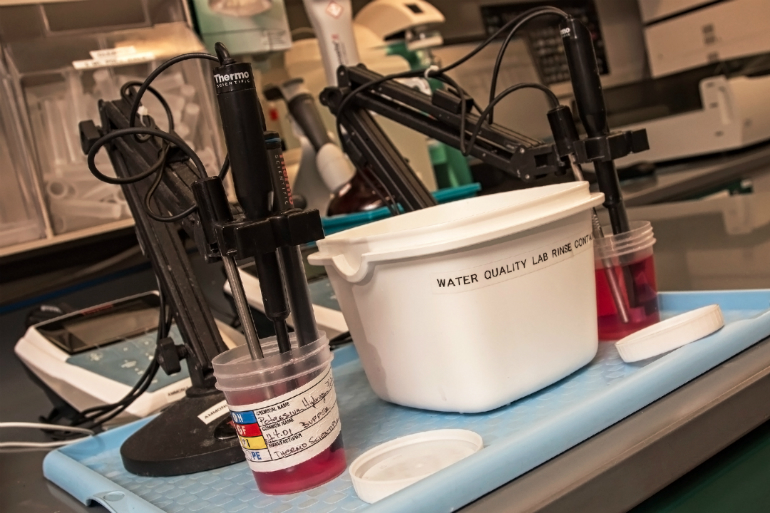Mad Scientists in the Aquarium Lab

In Focus
Tuesday, November 15, 2016
If you go up a couple flights of stairs and through a series of doors, you’ll find a scientific lab tucked away behind the scenes at the Aquarium. The scientists in this lab aren’t mad in a crazy way, but they are madly passionate about water quality.
Every day they test water from 100 exhibits to make sure that it’s a healthy environment for our animals. Water Quality Lab Technician Agi Lontai is here to share what it’s like to work in the lab with Water Quality Manager Karen Tuttle Stearns and their volunteer staff.
When I arrive at the Aquarium in the early morning, everything is so calm. The doors have yet to be opened, so the galleries are empty and most of my co-workers are still at home getting ready for the day.

However, it’s a different story in the water quality lab, and mornings are really busy for us! Husbandry staff arrive at the lab on a rolling schedule with samples from their exhibits, and we also go out to different areas of the Aquarium to collect samples for testing.

Fish exhibits and touch experience tanks are tested at least once a week, while those with marine mammals are tested daily. We also analyze the water that is brought in by the Catalina Water Company and water from other areas that aren’t part of our husbandry staff’s morning rounds, such as our large seawater reservoir and sea otter exhibit.
This means we typically test around 2,000 samples in a week. You can imagine that running all those tests results in a lot of running around!

Once samples are in the lab, then the scientific processes begin. First, we need to test a sample for pH within fifteen minutes of its arrival to ensure an accurate reading. Then, we examine certain samples for fish waste by-products such as ammonia or bacteriological loads including E. coli and other things.

While we do our routine work of running tests and calibrating laboratory equipment, we also enter data and record results into our database. This requires an incredible amount of attention and takes being detail oriented to another level. Playing classical music over the lab’s speakers helps me concentrate and ensures that I’m accurately recording my findings.

Every so often, we go to an area of the lab that’s been dubbed the Six Figure Corner because it’s where some of our fanciest and most expensive machines are located. These machines help us with more advanced testing.
For instance, the set-up above allows Karen to perform solid phase extraction so that we can make sure medicated water has the appropriate therapeutic doses of medicine to keep our animals happy and healthy. As it turns out, we are one of only two Aquariums in the nation that perform these types of tests!

Life in the lab is both busy and calming, but above all, life as a “mad scientist” at the Aquarium is something that I truly love. Next time you see a ray soaring through the beautiful blue water or a school of sardines swimming alongside our otters, I hope you’ll think of me, Karen, and our team of volunteers working hard in the lab to make the water of these exhibits healthy for our animals.
